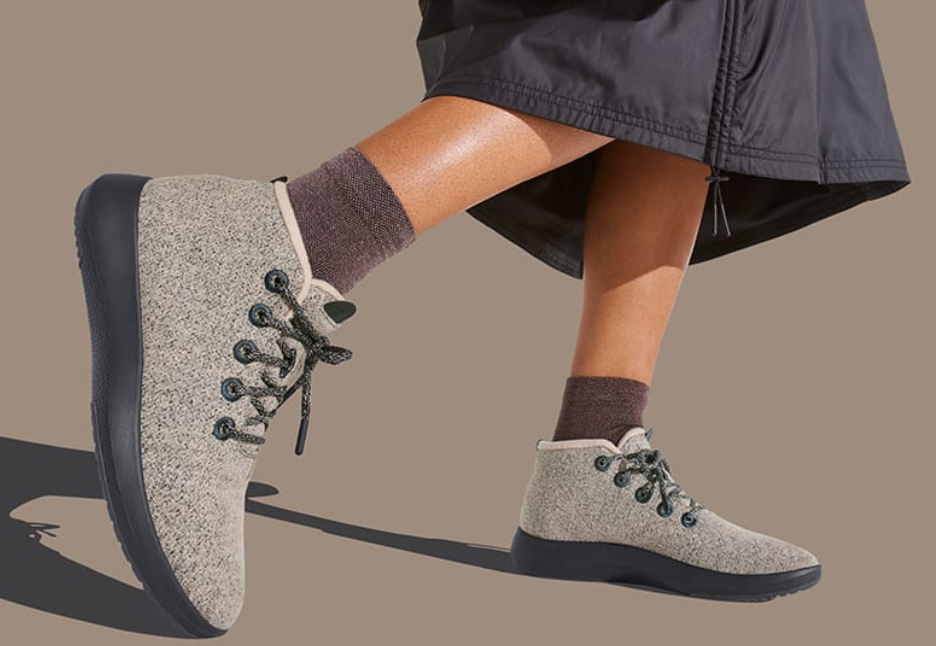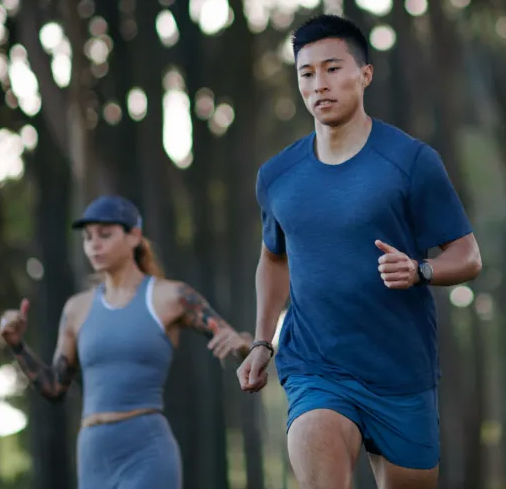Himanshu Sinha, VP/Digital Growth and E-commerce at sustainable shoe and apparel brand Allbirds, spoke to WARC’s Stephen Whiteside for Marketer’s Toolkit 2022 about sustainability as part of the brand’s DNA, differentiation in e-commerce, and experimentation in media.
Toolkit 2022
This interview is part of WARC's Marketer's Toolkit 2022. Read more.
Key insights:
- Allbirds considers how to minimise its carbon footprint across the entire value chain of its products, including sourcing materials, manufacturing, distribution and marketing.
- Sustainability is important, but it’s not a standalone purchase motivator for most people. The product must also be innovative and high quality to connect with consumers.
- Customers are not “offline” or “online” customers; customers are customers and brands need to be wherever they are.
Allbirds is known for its impressive sustainability credentials. Could you tell us more about how the company approaches this area?
For us, it’s part of our DNA. What it means is that in anything and everything we do, we are focused on how we can reduce our carbon footprint, how we measure it, how we offset it. So, it's not about a specific aspect of our value chain, but it's around everything.
So, it's really not just talking about one initiative or another. It's all about: How do we measure it? And then what are we doing to reduce it? A very, very basic example would be, if we are shipping our products from factories how we are shipping them? Are we shipping through air? Are we shipping through the ocean? And what’s the carbon footprint of that? So, for every step of our value chain, we are assessing and seeing how we can reduce the footprint.
Last, but not the least, you're going to end up with some carbon [emissions]. So we are offsetting that. Whether it's [using] a mechanic of green energy, or different mechanics, we are offsetting it.

Source: Allbirds
So, overall, it's all about measuring it, reducing it and offsetting it in everything we do. We plan to cut our footprint in half by 2025, then reduce it to near zero by 2030.

Himanshu Sinha, VP/Digital Growth and E-commerce, Allbirds
Are consumers paying more attention to sustainability when they make purchases?
I think it's becoming more and more mainstream. And, in terms of awareness, a lot of brands in the fashion and apparel space are taking the initiative, developing a roadmap, and sharing and socializing it. And consumers are noticing these things.
I still feel that, right now, it's not the primary consideration for a purchase. But it is evolving, when people are looking at a product to see what kind of carbon footprint they are creating, and so on.
I think there was a phase when companies were doing a lot of greenwashing [and] talking a lot about it but doing nothing. But recently, I have started noticing that there are projects [being] launched, and there is a lot more mainstream conversation.
But I think we have many miles [still to go] before we think we have achieved what we want to do.
How is sustainability incorporated into your messaging?
Just selling sustainability: I don't think that's a feasible and viable plan, or a business plan at all. It's essential – as I said, it's in our DNA – and we want to do everything right by the planet. But that's not what we are selling. We are selling shoes; we are selling footwear; we're selling apparel. And we want to make sure they're the best in quality and performance.
When we talk about Allbirds’ products, we do talk about sustainability, and how naturally and sustainably they are made. A lot goes behind it to make them sustainable. There's a lot of innovation happening to bring our products to life.

Source: Allbirds
The rest builds from there. Our products are versatile, and very comfortable. Our shoes are called the “most comfortable shoes in the world”. People love our products not just because they are sustainable, but because they are comfortable; it feels like you're walking on a cloud.
So, I think, at the end of the day, sustainability definitely is very, very important and fundamental to the way we operate. But what we want to do is make great products using sustainable and natural materials.
There is a movement towards measuring the environmental impact of making and distributing ads. Is that something Allbirds is looking at?
In every conversation we have internally, we talk about what kind of carbon footprint this is going to create. For example, if we need to use direct mail in our marketing, what kind of carbon footprint is it going to have? We calculate that. And then we make sure, if we are doing that, we are reducing, and offsetting it.
So, as I said earlier, in everything we do, we are very, very cognizant about what kind of carbon footprint we are creating. We measure, we reduce, and we offset what we cannot eliminate.
As more brands up their environmental credentials, does that undermine a point of differentiation for Allbirds?
I think it's great. We want more fashion brands to come and join us. It's not us versus them; it's for planet Earth. So, we want more of our friends in the industry to come and join us.
That's why, this year on Earth Day, we took our carbon calculator – a proprietary work to measure our carbon footprint throughout the value chain – and made it public. We made it open source and anyone can take it and use it.
We had an op-ed in The New York Times this Earth Day where we said, ‘Hey, friends in the industry, please use it.’ Because this is not between us [as brands]. It's between us as a society, against climate change.
So, absolutely, we want this to become mainstream.
The e-commerce category is increasingly crowded and commoditized. How is Allbirds trying to stand out?
Our products are great: they're comfortable, they’re innovative and, of course, they are sustainable as well. For us, we are building value, we are building great products. And we think customers are willing to pay the price for that value.

Source: Allbirds
So, a lot of the stuff that we are doing is cutting-edge in terms of technology and innovation, and that is our credential. For example, with our partners we have created a negative carbon footprint sole.
That’s our take on it: we are creating real, tangible benefits and value for our customers, which happen to be sustainable and good for the planet. That's our going-in messages as we talk to our customers.
And we are just getting started. We are still low in terms of our awareness in the country. But more and more people are learning about us, and we are establishing our credentials. We are hoping we are going to grow in that way.
What have you learned from building out that network of brick-and-mortar outlets?
We are finding that customers are not “offline” or “online” customers; customers are customers. And we need to be there wherever they are.
We believe brick-and-mortar is additive. Our data suggests that customers who shop both online and offline have significant higher repeat rate and LTV [lifetime value]. Secondly, we have found that there is a halo effect of having stores in a particular geography. In the geographies where we are opening stores, we are finding that our online traffic is increasing – that stores are serving as billboards to publicize our online presence as well.
So, we think they're going to work hand in hand; they're going to work to improve customer lifetime value, improve our CAC [customer acquisition costs] and then, from a customer experience perspective, they will have an Allbirds store in their reach.
How does Allbirds balance brand building with performance marketing?
Every interaction and engagement we have with our customers is a brand-building opportunity, hence, we try to be thoughtful and intentional about it. We do have brand moments through thought leadership. For example, for Earth Day, we open sourced our carbon calculator. Another one is our collaboration with adidas on making the lowest carbon footprint shoe. Our values and our purpose is where we lean into to build our brand equity.
Having said that, we also treat every marketing interaction as performance marketing regardless of where it fits in traditional funnel [awareness, consideration, conversion]. What it means is that we are measuring all the media we run. Through multiple measurement methods, we are trying to estimate and understand the immediate value that marketing media is creating.
So, for example, this year, we have invested heavily in TV, both linear and streaming. We were not necessarily optimizing that spend for same-session conversions, but we are trying to understand the correlation between visits, the traffic coming in, and the likelihood they will convert in the next 14 to 30 days.
Our performance measurements vary based on the objective of the media/platform. For each of our tactics, we have primary and secondary KPIs, and not necessarily every KPI is conversion. For example, brand awareness and brand lift are KPIs we monitor closely, we have a 24/7/365 brand study running.
So, basically, our goal is that we are balanced throughout the funnel. We are measuring, and we are correlating the actions we are getting from our tactics with eventual conversion so we can do a much better capital allocation all the way to the top of the funnel.
What I have found, traditionally, is that when everything is focused on conversion, the mid-funnel or top-funnel focused media, those tactics just die, because it's very difficult to drive immediate conversion with them.
Are there any new channels of particular interest right now?
We are always testing marketing channels/platforms around stages of the customer funnel - like TV, podcasts, and all the way down to direct response programmatic
Always, a certain percentage of our media budget is trying to explore and understand new channels, and as it starts meeting our performance thresholds we make it a part of our evergreen media, and on a weekly and monthly basis, we adjust the budget based on target efficiencies we are seeing.
As said earlier, when I say, “target efficiency”, not necessarily everything is associated with immediate, or last-click attributed conversion and the revenue-based ROI, but on incrementality measured in the channel.
Yes, we do have some primary channels, as you can imagine paid social, paid search, TV, podcast, display and programmatic channels. But, beyond that, we're always testing and always trying to figure out what's working.
We are always iterating through our channels and marketing tactics to make sure that we are always optimizing our efficiency.
How has your approach to measurement developed over time?
We are looking more broadly across [omnichannel] in terms of understanding our efficiencies. When we talk about the marketing efficiencies, we're not just talking about “marketing efficiency” in digital marketing or channel-specific marketing efficiencies. What we really care about is marketing as a percentage of the entire P&L.
At more of a channel level, we are continuously experimenting. Firstly, we are going away from the last-click and attribution-based thinking versus scientific studies around incrementality of channels and how we are measuring them. Secondly, we are really treating each channel differently based on purpose of the media. For example, TV success metrics would be very different than the paid shopping ads
One of the things which I have observed is that you can't rely on just one method to understand the performance of a channel. We are using multiple methods, understanding the range where a challenge is performing, and using that data to make decisions, rather than just in-platform, or last click, or MMX-driven outcomes, but putting all of them together, and understanding, on average, where we are, and using that data to make decisions around how we operate and execute on a channel basis.
How is COVID changing the marketing environment?
I think things have changed quite a bit. The market conditions and macro factors have changed significantly in the last 20 months or so, especially from an e-commerce perspective.
Overall, you can see that now CPMs are going up, the marketing cost has risen significantly. It has become a lot more important to build a direct relationship with our customer. I think that's the benefit of being a direct-to-consumer brand - you can build a consumer profile using first party data and understand who customers are and how we can build stronger relationships with them.
And you can start reducing your reliance on these marketing platforms. They're always going to be there, but reducing that reliance and having that direct relationship, whether it's through physical stores or through direct channels, with our customers. That is what we are hoping to do in medium-to-long term. That's the biggest change I see in the way a DTC brand would operate in future.
Is first-party data the key here – especially as online cookies are being phased out?
I think that's the foundation of it. It starts there: Do we really understand who our customers, do we understand their motivation and intent? How do we build stronger relationships with them? How do we bring them back - organically? How can we be there when they are thinking of buying something?
The way we look at first-party data is not only about collecting the data. We listen, we reflect and then we act. Listening is critical, listening to what our customers are saying - through multiple sources, connect them and make sure that we take the noise out.
Once you have reflected on the customer data, then act, make sure that you are figuring out the right thing to do. What do you want to tell the customer? How do you want to engage the customer based on the broader context of how they are interacting with the brand?
What does this mean for how you engage with consumers?
Every interaction and experience customers have with us represent our brand, our values, and our purpose, so we always try to be honest and transparent. We want to make sure that our engagement and interaction at any touchpoint with our customers are relevant and cognizant.

Source: Allbirds
That touchpoint, as I said, could be anywhere from customer service, retail store, website, review system. We need to be consistent around all of that. And we need to be understanding where the customer is coming from.
And I think that's how we're going to build that flywheel of customers really valuing the service and the value we are providing, and then coming back more organically, rather than going back to Google or Facebook to figure out where to buy a pair of shoes.
What is top of mind for you going into 2022?
I think it's to continue building on the right foundation. From the martech perspective, it’s building the right customer experience, and doubling down on that.
As we talked about, we have seen good success between omnichannel and digital channels. So, that's the ecosystem. We reach people where they are and reduce all the friction from their experience, so they experience the brand in the best way possible.
How can you make sure that happens in a consistent way across digital and physical?
Being a digital-native brand, we have certain advantages from the execution perspective, the foundation and the backend systems as you can imagine.
As we are opening more stores, we are focused on how we can create the omnichannel experience, endless aisles, buy online and pickup in-store, fulfillment from the store, etc. These are the things which we are focused on.
It’s nothing new in terms of what the roadmap would look like for a DTC and online-to-offline brand. And being a digitally-native brand, we definitely have some execution advantages.
What are the big challenges for 2022?
There are always macro factors and how COVID is going to play out. Logistics is a big issue, as you are probably hearing in the news. In marketing, definitely privacy, consumer preferences and always-rising marketing cost would be big challenges in 2022.
What are you most looking forward to for next year?
Continuing to build on the brand. I think we are reaching customers where they are, and we're just getting started. We have a very exciting product roadmap.

